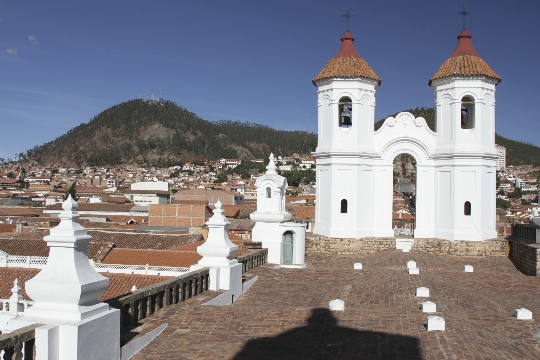Sucre - the capital of Bolivia

In the center of South America, between Argentina and Brazil, a state is hidden, uniting many nationalities and nationalities. In total, the country has 1.1 million inhabitants, of which approximately 250 thousand live in the capital of Bolivia - Sucre.
Information about the capital
According to a book called «Chronicle of Peru», the city was founded back in 1538. For a long time, the city had a colonial status. Silver was mined here in large quantities, and the locals were very wealthy. The first name of the settlement was translated as «Silver City».
Ciudad de la Plata was very popular with the locals due to its mild climate. In addition, Europeans came here in large numbers in search of enrichment. In 1624, a university was founded in the city, which quickly became one of the best in all of South America. Many presidents of various states studied medicine, law and other sciences here. Today, about 30 thousand residents of Sucre study in this institution..
Attractions Sucre
The city has many interesting museums, palaces and other attractions..
- La Racoleta Museum is a museum that boasts a magnificent display of paintings, sculptures and works from the colonial era. The institution is located in a former monastery, so that each visitor can get acquainted with the life of the monks of the seventeenth century.
- The Liberty House Museum is the main architectural monument symbolizing Bolivia's struggle for independence. At first glance, the building does not attract much attention, but its role in the history of the country cannot be underestimated. After all, it was here that the independence of the state was declared. Many exhibits remind of those great and glorious times.
- The Tarabuco Market is one of the most unusual and amazing sights. Located 65 kilometers from Sucre, the market attracts a large number of tourists. It is here that you can see colorful folk costumes of the Yampara Indians. There are many original items, products and other souvenirs on sale.
The city is also the political center of Bolivia. It was here that the movement for the independence of the state was founded. In 1825, the participants in the revolution signed a declaration here on the freedom of the state from Spanish colonization. In the same year, the city was proclaimed the capital of independent Bolivia. The name has also been changed. Since then, the main city of the state bears the name of the war hero Jose Antonio Sucre.
Today the city has the status of the most attractive, beautiful and calm settlement in Bolivia. Despite the fact that La Paz actually performs the functions of the capital, Sucre has not lost its influence and charm..




